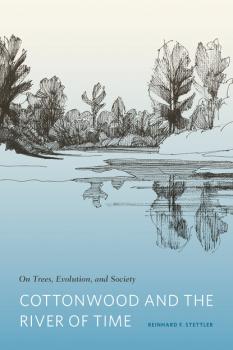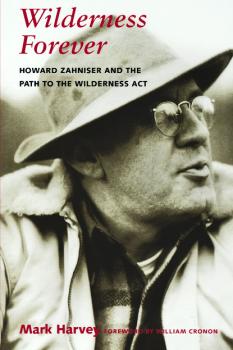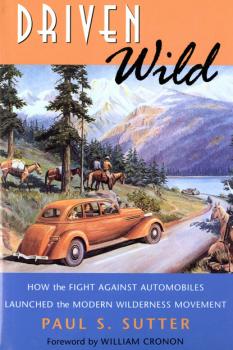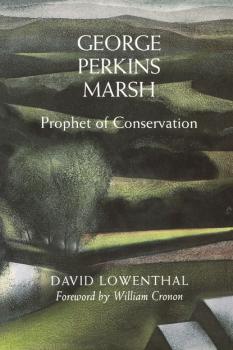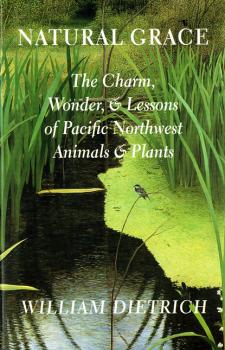Биология
Различные книги в жанре БиологияCottonwood and the River of Time
Cottonwood and the River of Time looks at some of the approaches scientists have used to unravel the puzzles of the natural world. With a lifetime of work in forestry and genetics to guide him, Reinhard Stettler celebrates both what has been learned and what still remains a mystery as he examines not only cottonwoods but also trees more generally, their evolution, and their relationship to society.Cottonwoods flourish on the verge, near streams and rivers. Their life cycle is closely attuned to the river's natural dynamics. An ever-changing floodplain keeps generating new opportunities for these pioneers to settle and prepare the ground for new species. Perpetual change is the story of cottonwoods – but in a broader sense, the story of all trees and all kinds of life. Through the long parade of generation after generation, as rivers meander and glaciers advance and retreat, trees have adapted and persisted, some for thousands of years. How do they do this? And more urgently, what lessons can we learn from the study of trees to preserve and manage our forests for an uncertain future?In his search for answers, Stettler moves from the floodplain of a West Cascade river, where seedlings compete for a foothold, to mountain slopes, where aspens reveal their genetic differences in colorful displays; from the workshops of Renaissance artists who painted their masterpieces on poplar to labs where geneticists have recently succeeded in sequencing a cottonwood's genome; from the intensively cultivated tree plantations along the Columbia to old-growth forests challenged by global warming.Natural selection and adaptation, the comparable advantages and disadvantages of sexual versus asexual reproduction, the history of plant domestication, and the purposes, risks, and potential benefits of genetic engineering are a few of the many chapters in this story. By offering lessons in how nature works, as well as how science can help us understand it, Cottonwood and the River of Time illuminates connections between the physical, biological, and social worlds.
Wilderness Forever
Winner of the Forest History Society's 2006 Charles A. Weyerhaeuser Book AwardAs a central figure in the American wilderness preservation movement in the mid-twentieth century, Howard Zahniser (1906-1964) was the person most responsible for the landmark Wilderness Act of 1964. While the rugged outdoorsmen of the earlyenvironmental movement, such as John Muir and Bob Marshall, gave the cause a charismatic face, Zahniser strove to bring conservation's concerns into the public eye and the preservationists' plans to fruition. In many fights to save besieged wild lands, he pulled together fractious coalitions, built grassroots support networks, wooed skittish and truculent politicians, and generated streams of eloquent prose celebrating wilderness.Zahniser worked for the Bureau of Biological Survey (a precursor to the Fish and Wildlife Service) and the Department of the Interior, wrote for Nature magazine, and eventually managed the Wilderness Society and edited its magazine, Living Wilderness. The culmination of his wilderness writing and political lobbying was the Wilderness Act of 1964. All of its drafts included his eloquent definition of wilderness, which still serves as a central tenet for the Wilderness Society: «an area where the earth and its community of life are untrammeled by man, where man himself is a visitor who does not remain.» The bill was finally signed into law shortly after his death.Pervading his tireless work was a deeply held belief in the healing powers of nature for a humanity ground down by the mechanized hustle-bustle of modern, urban life. Zahniser grew up in a family of Methodist ministers, and although he moved away from any specific denomination, a spiritual outlook informed his thinking about wilderness. His love of nature was not so much a result of scientific curiosity as a sense of wonder at its beauty and majesty, and a wish to exist in harmony with all other living things. In this deeply researched and affectionate portrait, Mark Harvey brings to life this great leader of environmental activism.
The Rhine
The Rhine River is Europe�s most important commercial waterway, channeling the flow of trade among Switzerland, France, Germany, and the Netherlands. In this innovative study, Mark Cioc focuses on the river from the moment when the Congress of Vienna established a multinational commission charged with making the river more efficient for purposes of trade and commerce in 1815. He examines the engineering and administrative decisions of the next century and a half that resulted in rapid industrial growth as well as profound environmental degradation, and highlights the partially successful restoration efforts undertaken from the 1970s to the present.The Rhine is a classic example of a �multipurpose� river – used simultaneously for transportation, for industry and agriculture, for urban drinking and sanitation needs, for hydroelectric production, and for recreation. It thus invites comparison with similarly over-burdened rivers such as the Mississippi, Hudson, Colorado, and Columbia. The Rhine�s environmental problems are, however, even greater than those of other rivers because it is so densely populated (50 million people live along its borders), so highly industrialized (10% of global chemical production), and so short (775 miles in length).Two centuries of nonstop hydraulic tinkering have resulted in a Rhine with a sleek and slender profile. In their quest for a perfect canal-like river, engineers have modified it more than any other large river in the world. As a consequence, between 1815 and 1975, the river lost most of its natural floodplain, riverside vegetation, migratory fish, and biodiversity. Recent efforts to restore that biodiversity, though heartening, can have only limited success because so many of the structural changes to the river are irreversible.The Rhine: An Eco-Biography, 1815-2000 makes clear just how central the river has been to all aspects of European political, economic, and environmental life for the past two hundred years.
Faith in Nature
The human impulse to religion–the drive to explain the world, humans, and humans’ place in the universe – can be seen to encompass environmentalism as an offshoot of the secular, material faith in human reason and power that dominates modern society. Faith in Nature traces the history of environmentalism–and its moral thrust–from its roots in the Enlightenment and Romanticism through the Progressive Era to the present. Drawing astonishing parallels between religion and environmentalism, the book examines the passion of the movement’s adherents and enemies alike, its concern with the moral conduct of daily life, and its attempt to answer fundamental questions about the underlying order of the world and of humanity’s place within it.Thomas Dunlap is among the leading environmental historians and historians of science in the United States. Originally trained as a chemist, he has a rigorous understanding of science and appreciates its vital importance to environmental thought. But he is also a devout Catholic who believes that the insights of religious revelation need not necessarily be at odds with the insights of scientific investigation. This book grew from his own religious journey and his attempts to understand human ethical obligations and spiritual debts to the natural world.CHOICE Outstanding Academic Title 2005
The Lost Wolves of Japan
Many Japanese once revered the wolf as Oguchi no Magami, or Large-Mouthed Pure God, but as Japan began its modern transformation wolves lost their otherworldly status and became noxious animals that needed to be killed. By 1905 they had disappeared from the country. In this spirited and absorbing narrative, Brett Walker takes a deep look at the scientific, cultural, and environmental dimensions of wolf extinction in Japan and tracks changing attitudes toward nature through Japan's long history.Grain farmers once worshiped wolves at shrines and left food offerings near their dens, beseeching the elusive canine to protect their crops from the sharp hooves and voracious appetites of wild boars and deer. Talismans and charms adorned with images of wolves protected against fire, disease, and other calamities and brought fertility to agrarian communities and to couples hoping to have children. The Ainu people believed that they were born from the union of a wolflike creature and a goddess.In the eighteenth century, wolves were seen as rabid man-killers in many parts of Japan. Highly ritualized wolf hunts were instigated to cleanse the landscape of what many considered as demons. By the nineteenth century, however, the destruction of wolves had become decidedly unceremonious, as seen on the island of Hokkaido. Through poisoning, hired hunters, and a bounty system, one of the archipelago's largest carnivores was systematically erased.The story of wolf extinction exposes the underside of Japan's modernization. Certain wolf scientists still camp out in Japan to listen for any trace of the elusive canines. The quiet they experience reminds us of the profound silence that awaits all humanity when, as the Japanese priest Kenko taught almost seven centuries ago, we «look on fellow sentient creatures without feeling compassion.»
Driven Wild
In its infancy, the movement to protect wilderness areas in the United States was motivated less by perceived threats from industrial and agricultural activities than by concern over the impacts of automobile owners seeking recreational opportunities in wild areas. Countless commercial and government purveyors vigorously promoted the mystique of travel to breathtakingly scenic places, and roads and highways were built to facilitate such travel. By the early 1930s, New Deal public works programs brought these trends to a startling crescendo. The dilemma faced by stewards of the nation's public lands was how to protect the wild qualities of those places while accommodating, and often encouraging, automobile-based tourism. By 1935, the founders of the Wilderness Society had become convinced of the impossibility of doing both.In Driven Wild, Paul Sutter traces the intellectual and cultural roots of the modern wilderness movement from about 1910 through the 1930s, with tightly drawn portraits of four Wilderness Society founders–Aldo Leopold, Robert Sterling Yard, Benton MacKaye, and Bob Marshall. Each man brought a different background and perspective to the advocacy for wilderness preservation, yet each was spurred by a fear of what growing numbers of automobiles, aggressive road building, and the meteoric increase in Americans turning to nature for their leisure would do to the country�s wild places. As Sutter discovered, the founders of the Wilderness Society were «driven wild»–pushed by a rapidly changing country to construct a new preservationist ideal.Sutter demonstrates that the birth of the movement to protect wilderness areas reflected a growing belief among an important group of conservationists that the modern forces of capitalism, industrialism, urbanism, and mass consumer culture were gradually eroding not just the ecology of North America, but crucial American values as well. For them, wilderness stood for something deeply sacred that was in danger of being lost, so that the movement to protect it was about saving not just wild nature, but ourselves as well.
Conservation in the Progressive Era
Conservation was the first nationwide political movement in American history to grapple with environmental problems like waste, pollution, resource exhaustion, and sustainability. At its height, the conservation movement was a critical aspect of the broader reforms undertaken in the Progressive Era (1890-1910), as the rapidly industrializing nation struggled to protect human health, natural beauty, and «national efficiency.» This highly effective Progressive Era movement was distinct from earlier conservation efforts and later environmentalist reforms.Conservation in the Progressive Era places conservation in historical context, using the words of participants in and opponents to the movement. Together, the documents collected here reveal the various and sometimes conflicting uses of the term «conservation» and the contested nature of the reforms it described.This collection includes classic texts by such well-known figures as Theodore Roosevelt, Gifford Pinchot, and John Muir, as well as texts from lesser-known but equally important voices that are often overlooked in environmental studies: those of rural communities, women, and the working class. These lively selections provoke unexpected questions and ideas about many of the significant environmental issues facing us today.
George Perkins Marsh
George Perkins Marsh (1801�1882) was the first to reveal the menace of environmental misuse, to explain its causes, and to prescribe reforms. David Lowenthal here offers fresh insights, from new sources, into Marsh�s career and shows his relevance today, in a book which has its roots in but wholly supersedes Lowenthal�s earlier biography George Perkins Marsh: Versatile Vermonter (1958). Marsh�s devotion to the repair of nature, to the concerns of working people, to women�s rights, and to historical stewardship resonate more than ever. His Vermont birthplace is now a national park chronicling American conservation, and the crusade he launched is now global.Marsh�s seminal book Man and Nature is famed for its ecological acumen. The clue to its inception lies in Marsh�s many-sided engagement in the life of his time. The broadest scholar of his day, he was an acclaimed linguist, lawyer, congressman, and renowned diplomat who served 25 years as U.S. envoy to Turkey and to Italy. He helped found and guide the Smithsonian Institution, shaped the Washington Monument, penned potent tracts on fisheries and on irrigation, spearheaded public science, art, and architecture. He wrote on camels and corporate corruption, Icelandic grammar and Alpine glaciers. His pungent and provocative letters illuminate life on both sides of the Atlantic.Like Darwin�s Origin of Species, Marsh�s Man and Nature marked the inception of a truly modern way of looking at the world, of taking care lest we irreversibly degrade the fabric of humanized nature we are bound to manage. Marsh�s ominous warnings inspired reforestation, watershed management, soil conservation, and nature protection in his day and ours.George Perkins Marsh: Prophet of Conservation was awarded the Association for American Geographers' 2000 J. B. Jackson Prize. The book was also on the shortlist for the first British Academy Book Prize, awarded in December 2001.
Natural Grace
From the interactive clockwork world of geology, tides, Northwest weather, and snow, to the hidden roles of dirt, stream life, and mosses and lichens, Pulitzer Prize winning writer William Dietrich explores the natural splendors of the Pacific Northwest. His topics include alder and cedar; jellyfish, geoducks, crabs, and killer whales; mosquitoes and spiders; gulls, crows, and bald eagles; and sea otters, coyotes, raccoons, possums, deer, and cougars.This informative and engaging selection of natural history essays is adapted from articles published in the Seattle Times magazine, Pacific Northwest. A native Washingtonian, Dietrich has watched the Northwest double in population during his lifetime. Our rapidly changing view of nature is an underlying theme throughout his wide-ranging essays, as is the timely and essential question of how best to share and conserve the natural world that drew us to the region in the first place.Not a field guide nor an environmental policy book, Natural Grace is intended as a primer for people who are curious about the environment they live in and the pressures upon it. «We only care about what we know,» says the author. «I�ve concluded that enthusiasm and commitment begin from learning just how marvelous this region is: Passion has to precede purpose.» And there is much to marvel over. Dietrich has unearthed fascinating and unexpected facts about his subjects, and he has a gift for expressing complex information in clear and vivid language. He asks intriguing questions and makes good use of interviews with Northwest scientists and experts to convey current and historic attitudes and economic realities, and to consider where we go from here. For more information about the author go to: http://www.williamdietrich.com/
Furry Fables: Cat Tales: Magical Fables: Entertaining and Heartwarming Stories
For all those who love cats and good-natured fables, this will be an enjoyable reading experience. With an interesting variety of captivating storylines, you will be gently whisked away into colorful fantasy worlds in these entertaining and heartwarming tales. <br><br>As the enchanting stories unfold in Furry Fables, you'll meet up with a jolly purple rabbit, a talkative tree, a mysterious mountain dweller, a helpful village sheriff, a happy-go-lucky kitty, a clumsy bear, and you'll get in on a touching farewell to an old friend. All of the magical tales revolve around personable cats that come in contact with lively and fascinating characters. <br><br>Furry Fables– a part of Tygo Lee's unique collection of creative writings that range from the serious to the carefree and humorous, thoughtfully brought to life through a great variety of magical fables, fantasy tales, inspirational stories, and reflections.<br><br>A dreamy world of wonder and imagination is awaiting you now.
